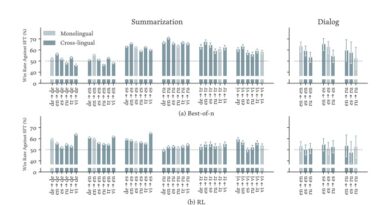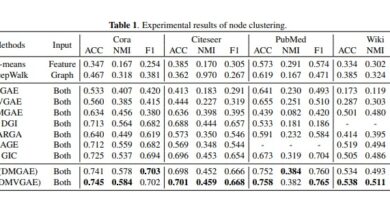Google DeepMind’s Frontier Safety Framework: Proactive AI Risk Management
Artificial Intelligence (AI) has made significant strides in recent years, revolutionizing industries and impacting various aspects of our lives. However, as AI systems become more advanced, concerns arise regarding their potential for harm, misuse, and unintended consequences. In response to these concerns, Google DeepMind has introduced the Frontier Safety Framework, a set of protocols designed to identify and mitigate potential harms related to future AI systems. This article will explore the Frontier Safety Framework, its objectives, and its significance in ensuring the safe development and deployment of AI technology.
The Need for AI Safety
As AI technology progresses, models may acquire powerful capabilities that could be misused, resulting in significant risks in high-stakes domains such as autonomy, cybersecurity, biosecurity, and machine learning research and development. The key challenge is to ensure that any advancement in AI systems is developed and deployed safely, aligning with human values and societal goals while preventing potential misuse.
Existing protocols for AI safety focus on mitigating risks from existing AI systems. Some of these methods include alignment research, which trains models to act within human values, and implementing responsible AI practices to manage immediate threats. However, these approaches are mainly reactive and address present-day risks, without accounting for the potential future risks from more advanced AI capabilities.
Introducing the Frontier Safety Framework
In response to the need for proactive AI safety protocols, Google DeepMind has developed the Frontier Safety Framework. This framework aims to address the future risks posed by advanced AI models, particularly the potential for these models to develop capabilities that could cause severe harm.
The Frontier Safety Framework is a proactive set of protocols designed to identify and mitigate future risks from advanced AI models. The framework is exploratory and intended to evolve as more is learned about AI risks and evaluations. It focuses on severe risks resulting from powerful capabilities at the model level, such as exceptional agency or sophisticated cyber capabilities.
Three Stages of Safety
The Frontier Safety Framework comprises three stages of safety for addressing the risks posed by future advanced AI models:
1. Identifying Critical Capability Levels (CCLs)
The first stage involves researching potential harm scenarios in high-risk domains and determining the minimal level of capabilities a model must have to cause such harm. By identifying these CCLs, researchers can focus their evaluation and mitigation efforts on the most significant threats. This process includes understanding how threat actors could use advanced AI capabilities in domains such as autonomy, biosecurity, cybersecurity, and machine learning R&D.
2. Evaluating Models for CCLs
The second stage of the Frontier Safety Framework includes the development of “early warning evaluations.” These evaluations are suites of model evaluations designed to detect when a model is approaching a CCL. These proactive evaluations provide advance notice before a model reaches a dangerous capability threshold, allowing for timely interventions. This stage assesses how close a model is to success at a task it currently fails to do and makes predictions about future capabilities.
3. Applying Mitigation Plans
The third stage of the Frontier Safety Framework involves applying mitigation plans when a model passes the early warning evaluations and reaches a CCL. These mitigation plans consider the overall balance of benefits and risks, as well as the intended deployment contexts. Mitigations focus on security, preventing the exfiltration of models, and deployment, preventing the misuse of critical capabilities. The Framework highlights various levels of security and deployment mitigations to tailor the strength of the mitigations to each CCL.
Focus on Risk Domains
The Frontier Safety Framework initially focuses on four risk domains: autonomy, biosecurity, cybersecurity, and machine learning R&D. In these domains, the main goal is to assess how threat actors might use advanced capabilities to cause harm.
By addressing these high-risk domains, the Frontier Safety Framework aims to identify potential harms and develop appropriate mitigation strategies specific to each domain. This approach ensures a comprehensive understanding of the risks associated with AI systems and enables effective risk mitigation.
Conclusion
The Frontier Safety Framework introduced by Google DeepMind represents a novel and forward-thinking approach to AI safety. By shifting from reactive to proactive risk management, the framework aims to ensure the safe development and deployment of advanced AI models.
The Frontier Safety Framework’s three stages of safety, namely identifying critical capability levels, evaluating models for CCLs, and applying mitigation plans, provide a comprehensive approach to identifying and mitigating potential harms related to future AI systems.
By focusing on risk domains such as autonomy, biosecurity, cybersecurity, and machine learning R&D, the framework addresses the specific risks associated with each domain, enhancing the overall safety of AI systems.
As AI technology continues to advance, it is crucial to prioritize safety and ethics in its development. The Frontier Safety Framework sets a precedent for proactive AI safety protocols and serves as a valuable resource for researchers, developers, and policymakers in ensuring the responsible and beneficial use of AI technology.
Don’t forget to follow us on LinkedIn. Do join our active AI community on Discord.
Explore 3600+ latest AI tools at AI Toolhouse 🚀.
If you like our work, you will love our Newsletter 📰




